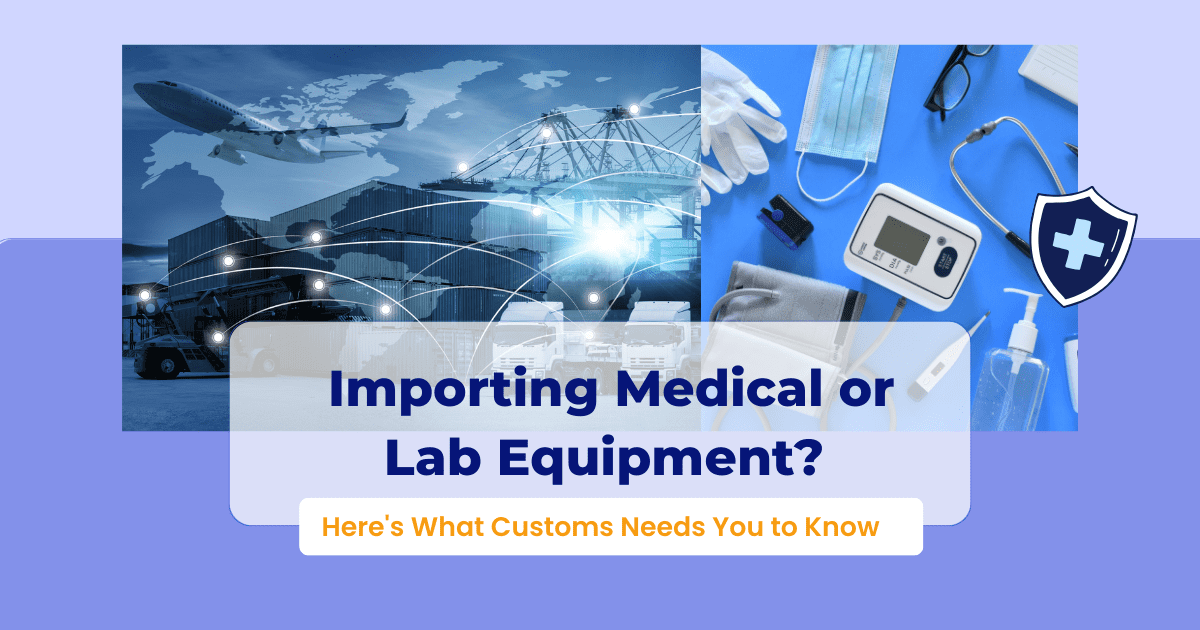
For hospitals, diagnostic laboratories, and biotech companies, importing medical and laboratory equipment is crucial in advancing healthcare and research. But unlike normal products, these products have strict customs controls and regulatory compliance. A minor paperwork error or failure to gain approval will result in delay of shipment, huge fines, or seizure.
This guide addresses the most critical aspects customs officers look at to clear lab and medical equipment—and how to make it more efficient.
1. Regulatory Approvals Are Required
Before shipping is arranged, verify if your equipment needs clearing by regulatory bodies such as:
- CDSCO (Central Drugs Standard Control Organization) – for notified medical devices.
- AERB (Atomic Energy Regulatory Board) – for radiation equipment such as CT scanners and X-ray units.
- DCGI (Drug Controller General of India) – for diagnostic reagents and kits in the category of drugs.
Don’t forget to cross-check the HS Code (Harmonized System Code) to ensure proper approvals are in place.
2. Documentation: Accuracy Counts
Successful customs clearance is based on accurate documentation. Typical documentation is:
- Import Export Code (IEC)
- Free Sale Certificate (as needed)
- Bill of Entry
- Certificate of Origin
- Technical manuals or product literature
- Regulatory approvals pertinent to the requirement
Small discrepancies in specifications or invoice amounts can cause delays.
3. Duties, Taxes, and Exemptions
Most laboratory and medical equipment qualify for a lower duty rate or exemptions, especially for approved hospitals and research centers. But the benefits should be correctly claimed at time of clearance.
Forgetting an exemption can add a huge amount to your import bill.
4. Packaging and Labeling Compliance
In addition to safe handling, equipment should comply with labeling aspects like:
- Model and batch details
- Manufacturing and expiration dates
- Importer details (for resale)
Incorrect or missing labeling is the most frequent cause of customs delays.
5. Explore DDP Shipping
While trying to avoid complying with demands, most companies choose Delivered Duty Paid (DDP) shipping where all duties, taxes, and documentation are paid by the seller until final delivery.
Benefits include:
- No extra charges
- Quick customs clearance
- Less administrative load on importers
6. Collaborate with Licensed Customs Specialists
With the intricacies involved in regulations, it is strongly advisable to hire a licensed customs broker or freight forwarder who specializes in medical imports. They assist with:
- Accurate HS Code classification
- Proper documentation submission
- Claiming duty exemption
- Rapid resolution of customs inquiries
Conclusion
Exporting medical and laboratory equipment is not just the transportation of commodities—it’s compliance with strict regulations. From permits and documents to markings and exemptions, each step has to be taken carefully to avoid cost-producings errors.
With pre-planning, benefiting from available exemptions, and through the services of seasoned customs specialists, hospitals, laboratories, and biotech firms can ensure that their equipment goes through customs trouble-free—so that they remain focused on their highest calling: improving healthcare and research uninterrupted.

